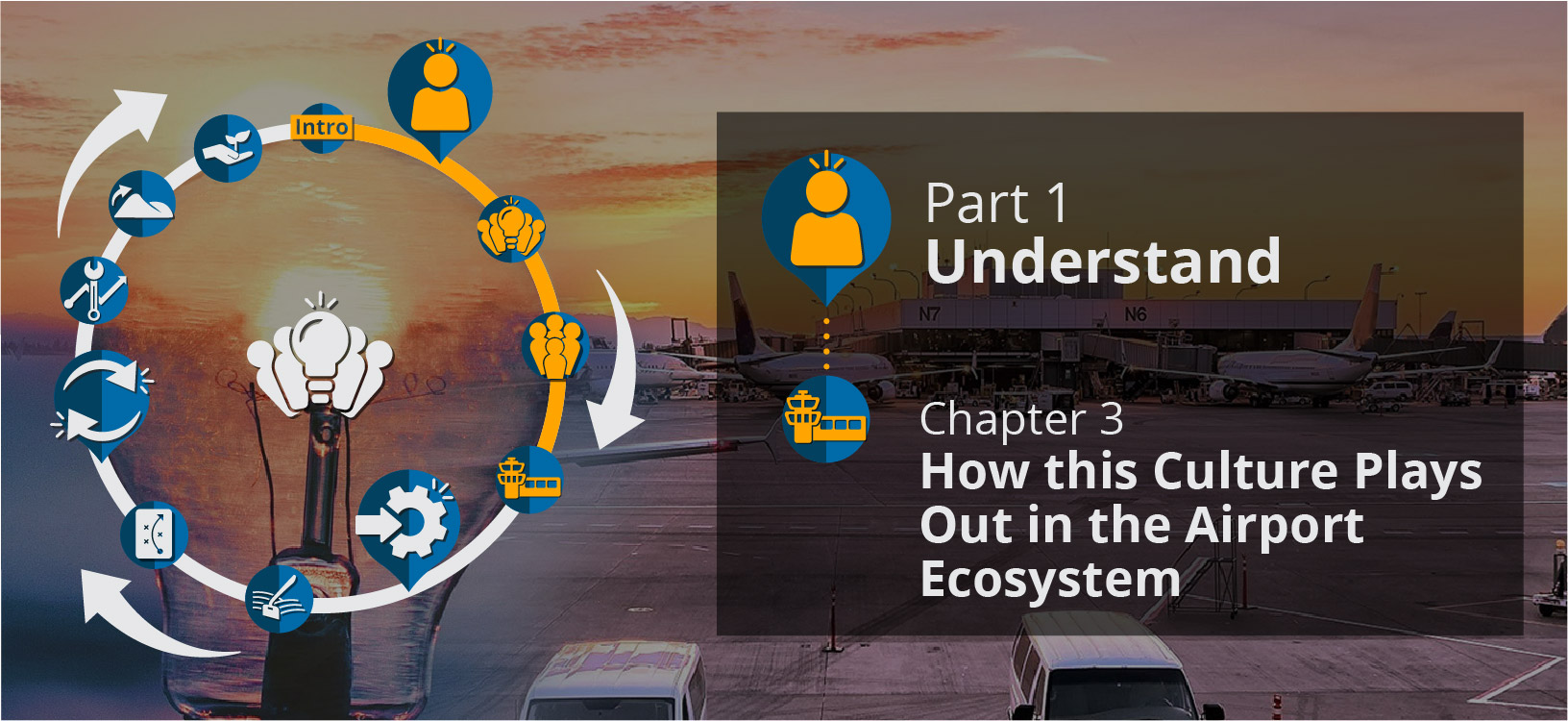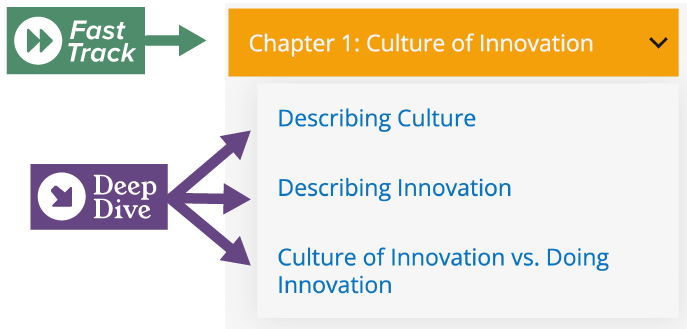
Chapter 3: How a Culture of Innovation Plays Out in the Airport Ecosystem
Individual Airport Business Functions
People in each airport business function play a pivotal role in incorporating innovation into an airport's culture, despite what some departments may think. Table F3.1 demonstrates just one of many ways that each business function can impact and support an innovative culture.
Table F3.1: Business Functions' Impact on an Innovative Culture.
| Effect on an Airport's Innovative Culture | Airport Business Function | Collective Behavior that Supports Innovation |
| Determines the overall strategic direction of an airport (e.g., traditional/outdated vs. future-oriented). |
Corporate Management (CEO/C-Suite)
|
Promoting innovation in airport strategy, and communicating this to staff, demonstrates its importance to staff and encourages innovative approaches. |
| Determines how laws and regulations are interpreted (e.g., rigid vs. broad). | Legal | Embracing opportunities to explore new ideas within the context of governing laws and regulations. |
| Determines which business methods are used (e.g., stern/unyielding vs. new/malleable). | Finance | Incorporating contemporary methodologies to promote financial stewardship. |
For a more detailed table, see Table D3.1 on this Deep Dive page.
Some business functions may struggle more to see their role in a culture of innovation; legal, procurement, and human resources typically made the top of the list. These business functions felt mired down in regulations or “processes and procedures” such that they could not see how they could be innovative. Being aware of these stumbling blocks is important as you work to clear these challenging ideals and position all business functions to join in the culture of innovation you are seeking to develop.
Synergies Between Airport Business Functions
Collaborative culture is a close cousin to a culture of innovation. When different departments come together to solve a problem or improve efficiency, they may already be innovating and not even recognize it. Table F3.2 presents some of the more typical synergies that support innovation.
Table F3.2: Synergies Between Airport Business Functions.
| Effect on an Airport's Innovative Culture | Business Function Synergies | Collective Behavior that Supports Innovation |
| How well they collaborate to maintain a financial system platform to promote timely financial transactions. | Information Technology & Finance | Working collaboratively to continuously improve financial technology. |
For a more detailed table, see Table D3.2 on this Deep Dive page.
How Partners Impact a Culture of Innovation
A partner can be defined as an external stakeholder in a traditional sense, such as an airline, government agency, concessionaire, ground transportation company, or fixed-base operator. Each of these can have a positive impact on your organization's innovative culture if you understand how to involve them and capitalize on their behaviors that support innovation.
Aviation Industry Partners
Recognizing your collective reputation with the aviation industry can be a good prompt to begin working with industry partners to find creative ways of improving the customer experience. Table F3.3 describes the need to collaborate with your aviation business partners.
Table F3.3: Aviation Industry Partners.
|
Effect on an Airport's Innovative Culture |
Aviation Partner |
Collective Behavior that Supports Innovation |
| How willing an airline is to integrate technology systems as well as share aircraft and passenger-related information with an airport to ensure passengers' needs are met. |
Airlines |
Putting passenger needs first to collaborate and create solutions together that fill any gaps in passenger care and exceed passenger expectations. |
| How open agencies are to applying governing rules and regulations at an airport in ways that improve the passenger experience. |
Government Agencies (TSA, CBP, FAA) |
Looking for ways to improve as airport partners and advocates of the airport and services provided. |
For a more detailed table, see Table D3.3 on this Deep Dive page.




